Introduction
Silicone rubber keypads are an integral component of many input devices, including remote controls, keyboards, and consumer products. When pressed they provide a tactile response which makes them user-friendly and efficient. Compression molding is one of the primary manufacturing methods used for producing silicone rubber keypads; it involves heating and compressing raw material to fill mold cavities for shaping purposes – producing high-quality rubber keypads with excellent consistency and durability as a result. In this article, we will delve further into this manufacturing method as a means for creating high-quality silicone rubber keypads – including how silicone rubber keypads are made.
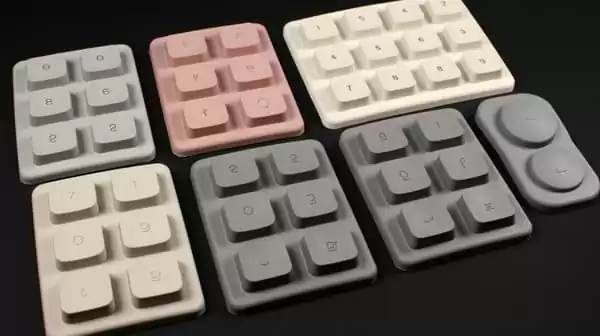
II. Materials and Equipment
To produce high-quality silicone rubber keypads using compression molding, specific materials, and equipment are necessary. Here are some other silicone rubber keypad make points to consider:
- Silicone material: Liquid silicone rubber (LSR) is the most commonly used material in compression molding for silicone rubber keypads. LSR offers excellent chemical and thermal resistance, making it ideal for use in various environments.
- Equipment: A compression molding machine is necessary to create the necessary heat and pressure for the molding process. The machine has a mold that consists of two halves, the top half and the bottom half, which come together to form the mold cavity.
- Tooling cavity and mold design: Tooling cavity and mold design are critical elements of the compression molding process. The design must ensure that the mold cavity is filled evenly with silicone material and that the shape and size of the keypad are precise. The design must also consider factors such as parting lines and webbing returns, which can impact the final product’s quality and consistency.
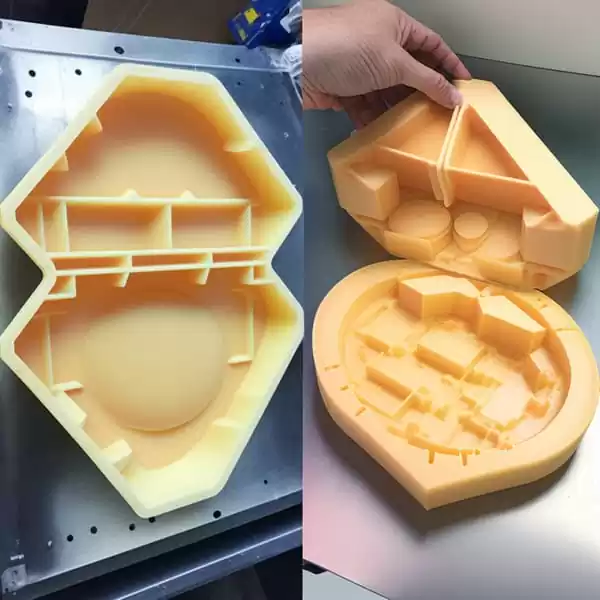
Overall, using the right materials and equipment, along with careful tooling cavity and mold design, is an essential component for producing high-quality silicone rubber keypads using compression molding.
III. Compression Molding Process
Compression molding is an efficient and cost-effective method for manufacturing silicone rubber keypads, as outlined below:
Raw Materials: Silicone material mixed with various additives is then poured into the mold cavity.
Heat and pressure: Once heated to an appropriate temperature, pressure must be applied on both halves of the mold to compact silicone into its mold cavity.
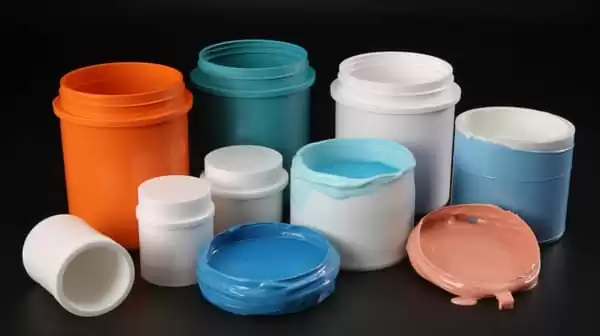
Fill materials: Filing materials are used to ensure that mold cavities are filled evenly with silicone material, creating keypads with precise dimensions.
Mold Release: Once the silicone material has set, the mold must be opened and the keypad removed from its home in the mold.
Compression molding offers several distinct advantages when producing silicone rubber keypads, including cost-effectiveness and consistency of finish quality. Furthermore, multiple colors and materials can be accommodated during production to produce keypads requiring precise actuation forces and tactile feedback – ideal for mass production! Compression molding also has excellent consistency and durability that guarantees top-tier products; furthermore, it accommodates multiple production runs without interrupting manufacturing flow – perfect for mass production! Furthermore, compression molding’s flexibility enables it to easily accommodate mass production.
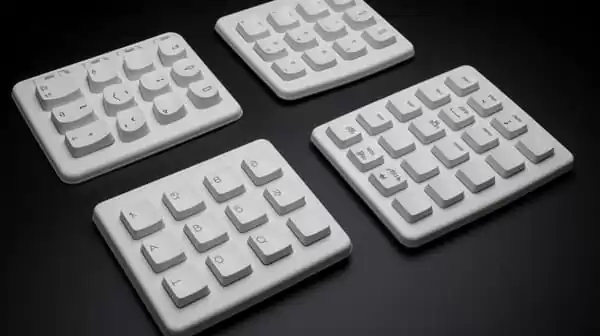
Compression molding stands out among other manufacturing processes such as injection molding by offering several distinct advantages. While injection molding may be best suited to producing intricate designs, its expense and inefficiency make it less desirable than compression molding for producing consistent wall thickness parts with higher strength-to-weight ratios at lower costs than injection molding would do; additionally, compression molding offers greater cost-efficiency for producing silicone rubber keypads in high volumes than injection molding can.
IV. Designing Silicone Rubber Keypads
When designing silicone keyboards and rubber keypads, numerous factors need to be considered to produce products of exceptional quality. Here are a few key points:
Actuation Force: When designing silicone rubber keypads, one of the primary considerations should be the amount of force necessary to activate each switch. This factor must remain consistent across all keys for optimal functioning and durability of the keypad.
Tactile Feedback: Tactile feedback refers to the physical sensation felt when pressing a keypad. For optimal user experience and efficiency, designing silicone rubber keypads with adequate tactile feedback is vitally important; carbon pills or webbing returns may be used in their design to enhance tactile response.
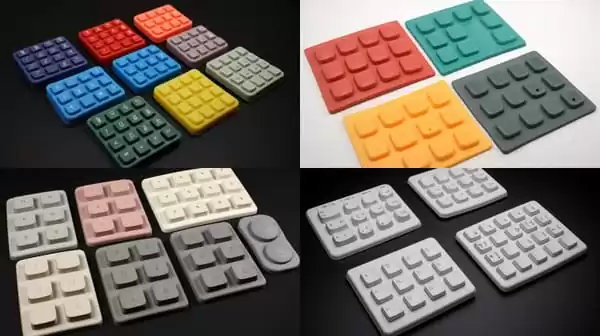
Customization: Silicone rubber keypads can be personalized using various techniques such as laser etching and screen printing. Laser etching can engrave key legends onto the silicone keypad, to increase durability and resistance against wear and tear; while screen printing adds color while making the keypad more aesthetically appealing.
Overall, when designing a silicone keyboard and rubber keypads it’s essential to take into account factors like actuation force, tactile feedback, and customization options. Doing so allows designers to craft high-quality silicone keypads that are both functional and aesthetically pleasing.
V. Applications of Silicone Rubber Keypads
Silicone rubber keypads are widely used in various consumer products, including remote controls, keyboards, and other input devices. Here’s a breakdown of some of the key applications of silicone rubber keypads:
Remote controls: Silicone rubber keypads are commonly used in remote controls for TVs, home theater systems, and other devices. The keypads offer a tactile response that makes it easy for users to navigate and control the devices.
Keyboards: Silicone rubber keypads are also used in keyboards for computers, laptops, and other devices. The same rubber keypads made offer a comfortable and responsive typing experience for users.
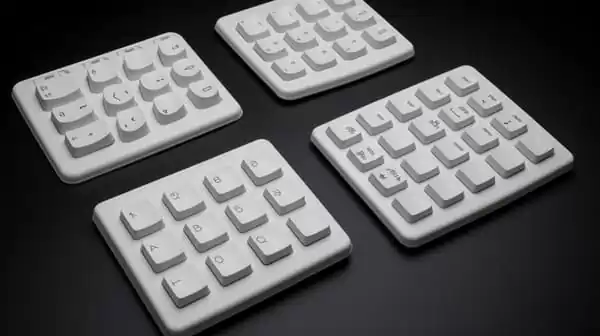
Other input devices: Silicone rubber keypads are also used in various other input devices, including game controllers, medical equipment, and industrial control systems.
In addition to their widespread use in consumer products, silicone rubber keypads are also essential in extreme temperature environments. Silicone rubber is highly resistant to extreme temperatures, making it ideal for use in applications where the keypad may be exposed to high heat or cold. This makes silicone rubber keypads ideal for use in industrial control systems, medical equipment, and other applications where extreme temperatures may be a concern. Overall, silicone rubber keypads offer a reliable and durable solution for various applications in different industries.
VI. Mass Production and Manufacturing
Silicone rubber keypads are mass-produced using compression molding, an efficient and cost-effective production method. Here is an outline of their mass production:
Tooling: First, we design the tooling cavity and mold according to the keypad specifications.
Raw Materials: Liquid silicone rubber (LSR) and other additives are mixed and then placed into the compression molding machine for use.

Compression molding: This machine applies heat and pressure to raw material, compressing it into the mold cavity and shaping it to produce the keypad design desired.
Mold Release: When the silicone material has set, the mold is opened and the keypad is extracted from its position.
Mass production offers many advantages over other manufacturing processes. Compression molding is highly efficient and allows for the rapid production of large numbers of keypads quickly and cost-effectively. Furthermore, mass production ensures consistency in each keypad produced; this is crucial when applied in applications requiring precision or consistency in output.
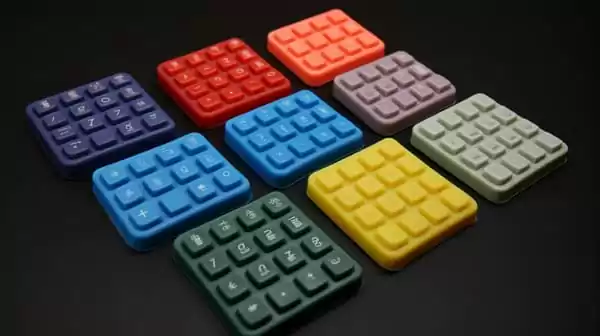
Quality control must remain a top priority during the mass production of silicone rubber keypads. Quality measures should be put in place throughout manufacturing to ensure each silicone keypad being produced meets desired specifications, such as inspecting for air bubbles or flash, testing actuation force and tactile feedback, and inspecting for air bubbles or flash. By taking measures designed to guarantee high-quality control measures are in place throughout manufacturing, manufacturers can guarantee each produced keypad is of superior quality that fulfills desired specs.
Conclusion
silicone rubber keypads are an integral component of various input devices, providing tactile feedback and ease of use to users. Compression molding is an efficient method for producing high-quality rubber keypads; manufacturers can utilize materials, equipment, and tooling designed specifically for this process to produce keypads with consistent actuation forces and tactile feedback that meets specifications while its customizable options such as laser etching and screen printing make this an incredibly flexible manufacturing method.
Overall, compression molding provides many advantages for manufacturing silicone rubber keypads. It provides maximum efficiency and cost-effectiveness allowing large-scale production quickly at reduced costs; additionally, it maintains consistency and durability of final products while meeting specific design requirements easily.
Compression molding manufacturers an effective means of creating silicone rubber keypads that meet all specifications for multiple input devices.



